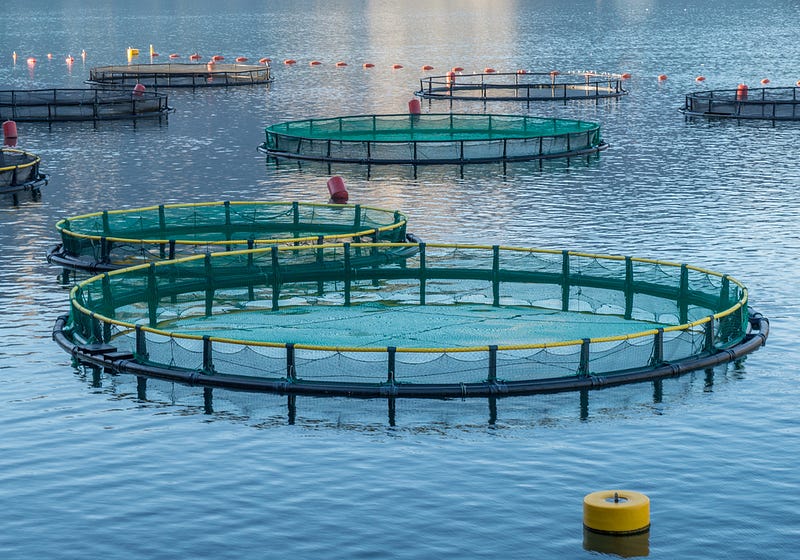Enhancing Biodiversity Offsetting: Social Considerations for Success
Written on
Chapter 1: Understanding Biodiversity Offsetting
Biodiversity offsetting is a strategy aimed at protecting the planet's ecological systems. This concept is akin to carbon offsetting, which involves investing in activities that absorb CO2, such as tree planting. However, biodiversity offsetting specifically targets the restoration and conservation of various plant and animal species. This may include implementing protective measures like fencing to safeguard wildlife habitats. Both methods ultimately strive for the health of our ecosystems.
At present, biodiversity offsetting is predominantly utilized in extensive industrial projects, mining operations, and infrastructure development, such as constructing roads and railways. These activities significantly diminish biodiversity by converting natural landscapes into urban environments. Addressing this loss is imperative, especially as global biodiversity has been declining for decades, leading to a pressing biodiversity crisis. For instance, Germany has witnessed a staggering 75% reduction in insect populations over the past 30 years.
While biodiversity offsetting is often framed as a trade-off between resource utilization and environmental conservation, it is frequently misused to further economic interests at the expense of natural preservation, neglecting the vital social dimensions. It is essential to recognize that humans are an integral part of nature; thus, any environmental degradation ultimately impacts human well-being. For example, restricted access to natural resources can adversely affect local communities, particularly indigenous populations. In this context, the following video illustrates the controversies surrounding biodiversity offsetting initiatives in Madagascar.
To ensure that biodiversity offsetting projects succeed, they must prioritize ecological protection over economic advantages and consider social implications. Two key social factors warrant attention: livelihood threats and place-based values.
Section 1.1: Addressing Livelihood Threats
Livelihood threats encompass adverse effects on people's living conditions, often resulting from conservation measures that restrict access to essential natural resources. For example, prohibiting locals from entering nearby forests can significantly impact their livelihoods.
Conversely, biodiversity offsetting initiatives should aim to alleviate these threats. A notable example is in Indonesia, where a water power project was complemented with fish cage aquaculture, enhancing local food production. This approach utilized existing water resources while improving community food security.

In France, farmers benefited from maintaining their land, even when designated for biodiversity offsetting. They received compensation for the ecological services their land provided, allowing them to continue traditional farming practices. Such initiatives demonstrate that prioritizing environmental conservation can yield social and economic advantages for local communities.
Section 1.2: Valuing Place-Based Considerations
Place-based values refer to the unique cultural, social, economic, and environmental traits of specific locations, shaping people's connections to their surroundings. Biodiversity offsetting initiatives can disrupt these values by removing irreplaceable elements from local communities, such as sacred burial sites.
While some recreational values can be substituted, it is crucial to select appropriate locations for offsetting. Local preferences often lean toward nearby offsets, as green spaces are vital for recreation and relaxation.
Conclusion
To effectively implement biodiversity offsetting initiatives, it is essential to focus on environmental preservation rather than solely on economic benefits, while also addressing social factors such as livelihood threats and place-based values.
Chapter 2: Taking Action for Biodiversity
Here are some actionable steps you can take to contribute to biodiversity conservation:
- Leave fallen leaves on the ground instead of disposing of them.
- Opt for plants over traditional lawns or paved surfaces.
- Consider beekeeping to support pollinator populations.
- Reduce water usage, for example, by installing water-saving devices.
- Dispose of hazardous waste responsibly.
- Choose organic options over chemical pesticides and herbicides.
- Allow wildlife to thrive undisturbed.
Which of these practices can you incorporate into your daily routine? Do you have other ideas for fostering biodiversity? Please share your thoughts in the comments to inspire collective action.
Credit
This article is derived from:
Tupala, A. K., Huttunen, S., & Halme, P. (2022). Social impacts of biodiversity offsetting: A review. Biological Conservation, 267, 109431.